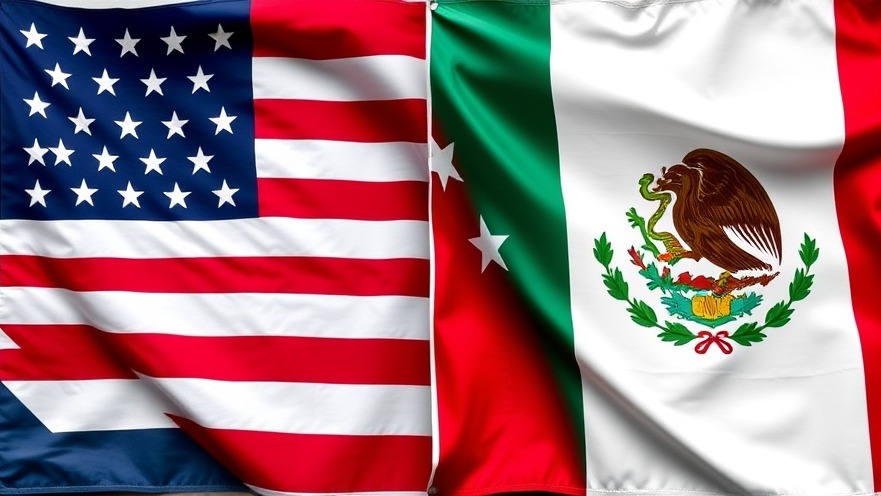
Texas Tariffs: An Impending Strain on Trade
The landscape of trade between Texas and Mexico, long characterized by a strong and mutually beneficial relationship, is facing a seismic shift. Starting August 1, 2025, a significant increase in tariffs imposed by the Trump administration threatens to shake up an economic alliance that has largely thrived under favorable conditions, with estimates suggesting an increase to 30% on various goods.
The Impacts on Texas' Economy
Texas, known for its robust economy, heavily relies on its trading partnership with Mexico, which totaled $281 billion in trade in 2024 alone. As the largest trading partner of the U.S., Mexico plays a pivotal role in various sectors, particularly agriculture. Dante Galeazzi, CEO of the Texas International Produce Association, warned, "When we talk about the possibility of a 30% tariff, that is a game changer.” This sentiment reflects the anxiety brewing among Texas exporters as they brace for the repercussions of increased tariffs, which could lead to escalated prices for consumers and stunted growth for businesses.
A Historical Context of Tariff Negotiations
The trade relationship between the United States and Mexico has been fraught with tension and negotiations, especially since Trump's tariffs were introduced in 2019, only to be momentarily alleviated by the United States-Mexico-Canada Agreement (USMCA). This agreement aimed to enhance trade through the elimination of tariffs on compliant goods. However, as historical patterns suggest, trade policies can be unpredictable, especially under the pressures of political negotiations and international relations.
The Agriculture Industry: At the Brink
The agricultural sector is among the most vulnerable to these trade changes. Major agricultural producers in Texas, which encompass various fruits, vegetables, and livestock, often source their products from or supply to Mexico. The proposed tariffs threaten not only profitability but also the ability to maintain year-round growing seasons. Farmers like Craig Slate of SunFed have already engaged in rigorous preparations to adapt to potential changes, having undergone a similar scenario in March 2025. "We’ve already been through a dress rehearsal, let’s say, so the preparation is kind of already in place," Slate explained, highlighting the resilience of the agricultural community in Texas.
Retaliatory Tariffs and Economic Fallout
The looming tariffs also raise concerns about retaliatory measures from Mexico and Canada, citing historical occurrences where tariffs have sparked trade wars, ultimately impacting consumers across borders. This has led economists to warn of potential price increases on everyday goods and an overall chilling effect on the economy. Numerous experts have noted that any trade restrictions could amplify inflation, creating challenges for Texans already grappling with heightened costs of living.
Potential Alternatives and Future Trade Relationships
While the immediate outlook may seem dire, there are avenues for negotiation that could alleviate some of the impending strain. Trade experts advocate for proactive engagement with Mexican officials to renegotiate the current agreements and mitigate the escalation in tariffs. With election season approaching in 2025, there may be increased political will to stabilize the North American trade framework, ensuring both nations benefit from a collaborative approach.
Conclusion: Navigating Uncertain Waters
In the face of impending tariffs, the Texas economy stands at a crossroads. The state's symbiotic relationship with Mexico faces profound implications that could ripple through various industries. As stakeholders prepare for the potential fallout of these tariffs, dialogue and negotiation will be key in safeguarding Texas' economic interests and maintaining the vitality of its agricultural and trade sectors. The next chapter in U.S.-Mexico trade relations could depend heavily on thoughtful engagement and strategic planning from Texas lawmakers and business leaders alike.
 Add Element
Add Element  Add Row
Add Row 



Write A Comment